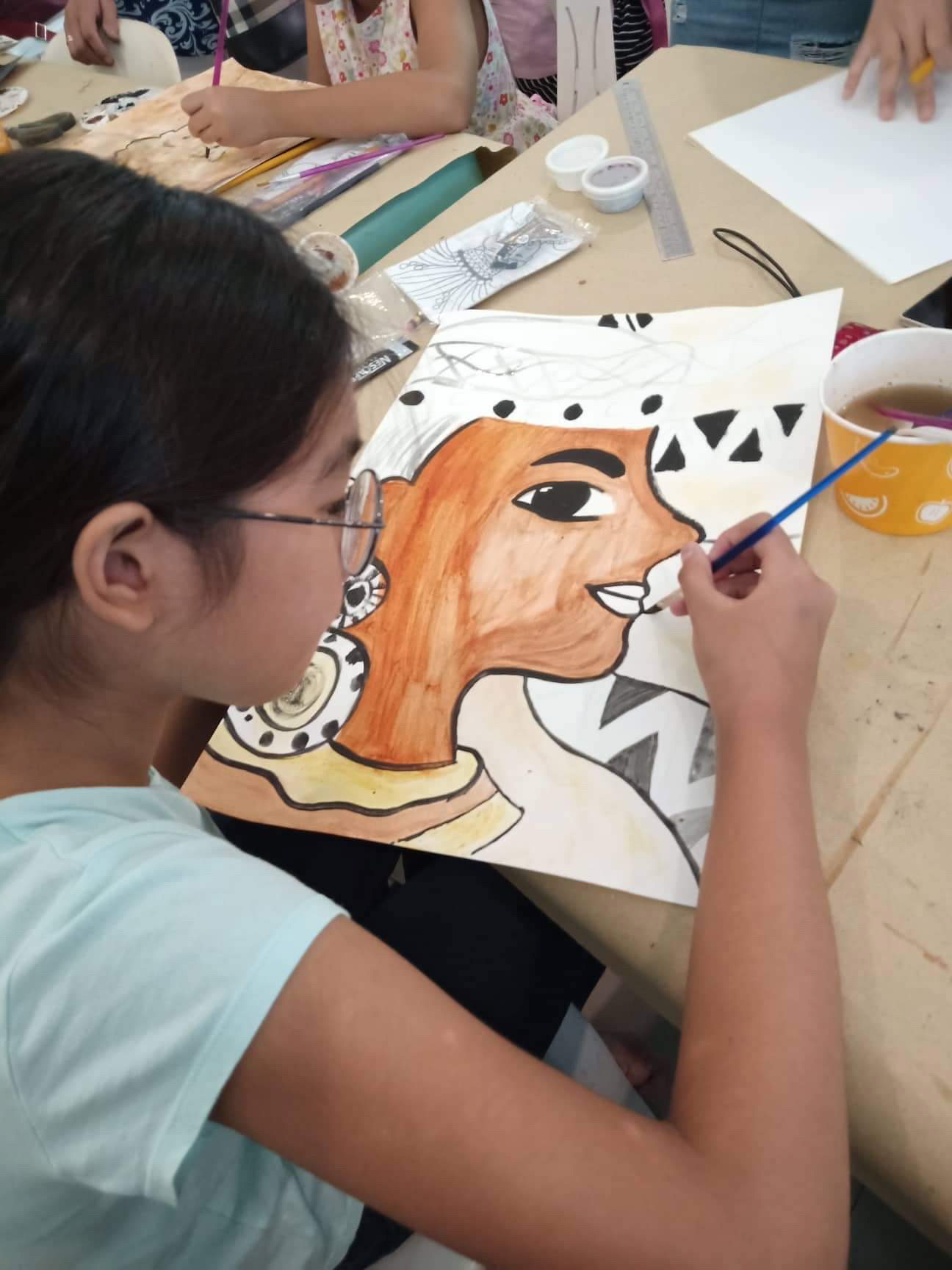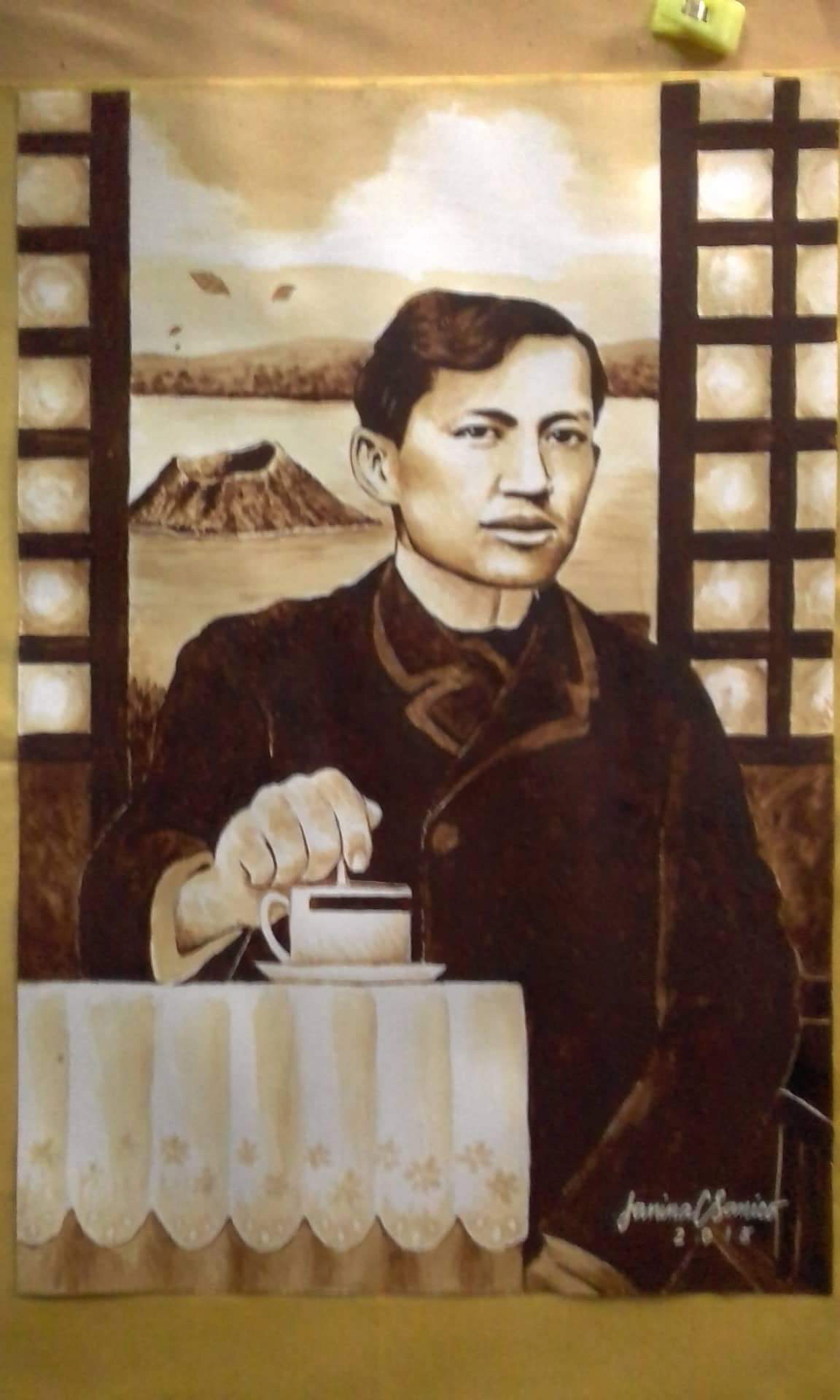‘Malikhaing Rizal’ inspires kids’ creativity

PAINT FROM NATURE Children are taught to paint using natural pigments from coffee or charcoal at the Rizal Shrine and Museum in Laguna. As a child, national hero Dr. Jose Rizal also painted using plant-based hues. —JANINA SANICO/ Contributor
SAN PEDRO CITY—As a young boy, national hero, Dr. Jose Rizal, painted with natural pigments, perhaps from basic kitchen spices like achuete (annatto seeds) and coffee beans.
“And being Rizal, he tried almost anything he could get his hands on to make good use of his time as a child,” said Zarah Escueta, curator of the Rizal Shrine and Museum in Calamba City.
This “colorful” piece of the hero’s childhood was what inspired “Malikhaing Rizal,” an art program for children in Rizal’s hometown in Laguna province.
Every summer, students attending Grade 5 to Senior High School levels, gather at the hero’s ancestral home, converted and ran as a museum by the National Historical Commission of the Philippines.
Like Rizal, children are taught to paint with colors extracted from natural ingredients like coffee beans and turmeric.
Article continues after this advertisement
RIZAL AND ‘BARAKO’ Janina Sanico’s portrait of national hero, Dr. Jose Rizal, holding a mug of coffee, is on display at a cafe in the hero’s hometown of Calamba in Laguna. The 2018 artwork is made with “kapeng barako” (Batangas coffee), a brew popular in Southern Luzon. CONTRIBUTED PHOTO
Cheap, available
Escueta said they started the art program in 2016 but so far had only two batches due to budget constraints.
Article continues after this advertisementAround 30 children sign up for the free workshop that runs for days at the Rizal Shrine and Museum.
Janina Sanico, a 24-year-old high school mathematics teacher who made a career as a coffee artist from Tanauan City in Batangas province, said she wanted to inspire children to be creative just like how Rizal once was.
Under “Malikhaing Rizal,” Sanico said the “fun” and learning experience would start from grinding or chopping the ingredient, extracting its color and mixing it with the right amount of water and binding agent, like a household glue. The binding agent is important to preserve the natural color long enough on canvas or paper.
“We know how art materials, like watercolor or acrylic [paint], could be expensive. Yet these [natural pigments] are cheap and readily available,” she said.
Nature’s offering According to Sanico, the idea is to make people appreciate and maximize whatever nature has to offer—even for art.
She uses coffee to extract a brown hue, achuete for red, turmeric for yellow, charcoal for black and ternate flowers for blue and purple.
She is still “experimenting” on other plant-based materials to create more colors.
“We also encourage the children to grow plants at home as these are where they can get their ‘paint’ for free,” Sanico said.
In the first run, the workshop carried the theme about Rizal’s life and works, while the second run focused on images of indigenous peoples.
The children’s artworks were put on exhibit for days at the Rizal Shrine and Museum.
Escueta said the museum was planning to launch more activities similar to the art workshop so guests would experience more interactive and relevant visits.
Being one of the main attractions in Laguna, the Rizal Shrine and Museum draws an average of 25,000 to 30,000 visitors a month, most of them families and students on educational trips.